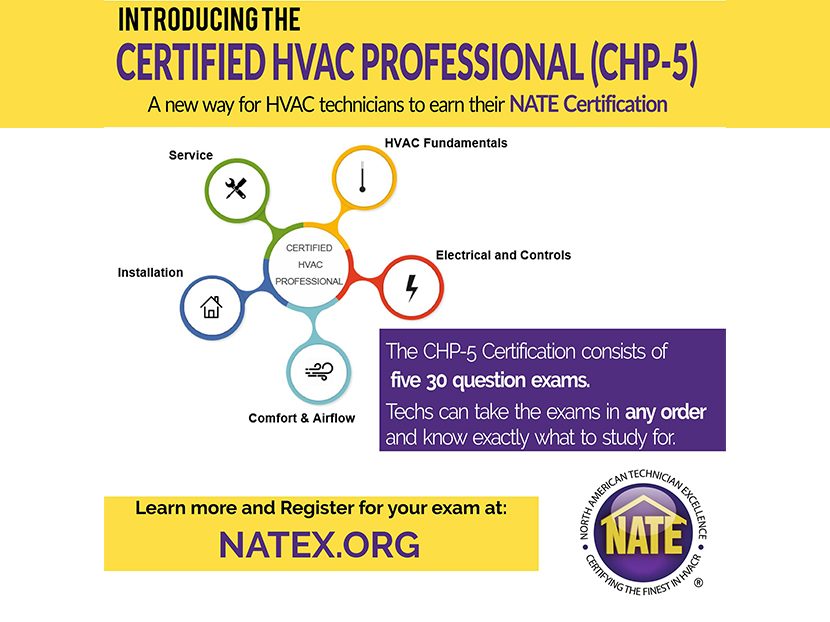NATE Launches New Certification Pathway for HVAC Technicians

On July 1, North American Technician Excellence (NATE) is launching a new certification pathway for HVAC technicians, the Certified HVAC Professional (CHP-5).
With the CHP-5, technicians can earn their NATE certification through a series of five, 30-question exams, each on a different subject domain: HVAC Fundamentals, Electrical and Controls, Comfort and Airflow, Installation, and Service. Technicians can take the exams in any order they choose and can take up to six months between each exam to study and prepare.
NATE’s goal with the CHP-5 is to help HVAC technicians feel more prepared while studying for their certification by grouping together exam subject areas. “We wanted to create a full development certification path that mirrors the on-the-job training that many technicians receive,” said John Lanier, NATE COO. “It gives technicians the opportunity to demonstrate their competency each step of the way,” as they take each exam.
The NATE Technical Committee, a group of volunteers made up of HVAC industry leaders, including contractors, product managers, engineers, educators, and distributors, worked to create the new certification pathway. The committee worked together over the past year to define the CHP-5 competencies and develop exam questions.
With the addition of the CHP-5, HVAC technicians now have two different ways they can become NATE Certified — either through the new CHP-5 pathway or through the traditional Core and Specialty exam pathway. Technicians that choose the traditional NATE certification pathway will take two exams — the NATE Core exam and a Specialty exam.
Technicians can take the CHP-5 in person with any NATE Testing Organization, or complete the exam online using NATE’s new remote Live Online Proctoring. This new online option gives technicians the opportunity to take their exam from home at a time that fits their schedule.
Find more information at www.NATEX.org.




